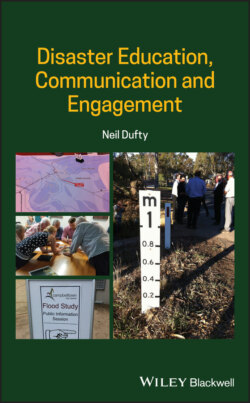Читать книгу Disaster Education, Communication and Engagement - Neil Dufty - Страница 24
2.3.3 Citizen Science
ОглавлениеMany projects tend to involve interested people who collect information to achieve a particular scientific research goal or goals. ‘Most successful crowdsourcing projects are not about large anonymous masses of people. They are not about crowds. They are about inviting participation from interested and engaged members of the public’ (Owens 2019). In this way, these crowdsourcing activities can be viewed as ‘contributory citizen science’. However, as Eitzel et al. (2017) remark, ‘not all citizen science is crowdsourcing and not all crowdsourcing is citizen science, some authors are concerned that these two words may become synonymous …’.
A fundamental aspect of citizen science is that the research goal is defined by a particular person or group, with participants recruited through an open call providing some significant effort towards achieving that goal or goals. It describes the engagement of people in scientific processes who are not tied to institutions in that field of science. Citizen science projects can range from projects developed completely independently within individual volunteer initiatives, to collaborative transdisciplinary work, to formalised instructions and guidance provided by scientific facilities.
There are numerous projects and disaster learning activities that involve the scientific collection of data for research and emergency management purposes. The growth in more readily available and low-cost technologies – such as smartphones, social media, and the internet itself – is allowing disaster citizen science initiatives to grow rapidly. For example, in northeast England, a citizen science project has harvested and used quantitative and qualitative observations from the public in a novel way to effectively capture spatial and temporal river response (Starkey et al. 2017). According to these researchers, not only are these ‘community-derived datasets most valuable during local flash flood events, particularly towards peak discharge’, they assist in community risk awareness.
